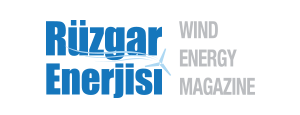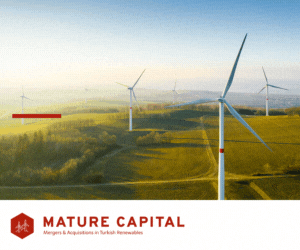Genel
Wind farm development

The investment in Wind Energy represents a typical example of a business project for the assessment of which is required a sound experience in multidisciplinary fields such as environmentally compatibility, meteorology, civil, mechanical and electrical engineering.
Developing a wind farm involves a significant amount of time and money: during this phase, investors and developers need to have a clear overview of all the technical features in order to identify the risks and make the best decisions for the project and avoid waste of resources.
Safeguarding the investment means designing a successful project and that’s why it is important to have a third party opinion and a technical assistance since the beginning of the development phase, regardless the size of the project.
WINDFOR provides a thorough professional assistance to build wind energy projects successfully, efficiently and cost-effectively, minimizing risk and increasing bankability with 35 years of experience.
The cornerstones of Wind Farm development can be summarized as: Wind, Grid, Environment, License and Permits, Public Acceptance and Economy. Starting from the green field, these are the main criteria to be applied for site screening and site selection of a Wind Project.
In Turkey, the orography often complex, the environmental constraints, the wide-ranging wind conditions and the lack of a reliable wind database are key factors requiring to find the best approach at the very early stage of the development, starting from the site screening.
A preliminary feasibility study combining an analysis of the regional and local wind resource, preliminary grid connection, environmental and economical risk analysis, shall be performed in order to verify the challenges of the project.
According to the stage of the development, a Feasibility study may include the following analysis:
Preliminary Energy Assessment, based on short term measurements and/or metereological data, reanalysis data
Administrative Evaluation , Planning Evaluation, constraints status, IEA regulations, seismicity
Analysis of Land Characteristics and Land Ownership Evaluation
Analysis of TEIAS Connection Point and accessibility
Radar and airport, Natural Water Resources Evaluation, Mining Licenses
Evaluation License Process, Existing Project Licenses in the area and other Applications
Technical and economic assumptions to be included in the financial model (development costs, CAPEX and OPEX, revenues)
Focusing on the first criteria, the Wind, during April and May 2014 many developers faced issues with the MGM application, that have caused the installation of met masts in locations not representative of their wind project, creating difficulties with license applications and increasing risks for their business.

The goal of a wind monitoring campaign is to provide the most representative wind resource characterization of the project site. And in complex terrain wind conditions can vary significantly within a relatively small radius. Choosing the right measurement program pays off its investment, allowing from the beginning to have reliable Preliminary Energy Assessment, to understand the criticality of the project and consequently to start early the optimization of the project design and the selection of the wind turbines suitable for the site.

According to the site limits, the complexity of the orography, the location and characteristics of the measurement mast (namely, its representativeness of the wind farm), a single measurement mast may be not enough to provide an Energy Yield Assessment with an acceptable uncertainty level. To strongly reduce risks and uncertainties at standard market levels, both for the bankability of the Project and to protect the investment, the measurement campaign may involve a number of masts and remote sensing systems, such as Light Detection and Ranging or Sonic Detection And Ranging systems, in particular for the vertical extrapolation of the wind speed.
IEC 61400-12-1 compliance of the met towers and remote sensing should be ensured and extensively documented by installation reports as well as each maintenance’s traceability.
Timely and thorough validation procedures allow to detect erroneous data, equipment failures and promptly manage maintenance services. An appropriate On-going Wind data Monitoring during the measurement is required to ensure a high data recovery.
According to the stage of the development, wind data analysis and energy assessment can be provided with different level of details and reporting: nonetheless the accuracy of the quality control and the validation of the wind flow modeling must be guaranteed.
Wind data analysis shall cover in details all the characteristic parameters of the wind at site, including: wind speed duration curve, distribution of wind speed by direction (wind roses), turbulence intensity, gust factor, seasonal and daily components of wind speed, wind shear analysis, standard deviation of wind direction, parameters of the Weibull distribution, physics such as air temperature and atmospheric pressure.
The wind speed statistics determined by the data collected at site usually are a picture of what has been observed during a limited period of time, different and shorter than the operational lifetime of a future wind farm. A long term analysis is need to verify the alignment of the average measured wind speed to that should be expected at site on the long term, possibly 10 years at least.

Energy Assessment can be performed with linear or CFD models, according to time requirements and the orography of the site. Beyond the long term wind data, attention shall be paid to: the accuracy of the elevation and roughness data in input to the model, the verification and validation of the wind flow model, cross prediction errors, the ruggedness index, the atmospheric stability, horizontal and vertical extrapolations, wakes analysis and layout optimization.
From the Expected Gross energy, is derived the Net Energy of the wind farm based on the analysis of the potential wind farm losses (WTGs, BOP and grid availability, transformer and line losses, environmental effects, blades and drive train degradation, power curve adjustment, curtailment, etc).
The uncertainty of each step of the assessment, from the wind data analysis to the losses, must be evaluated in order to estimate the Expected Net Energy production of the wind farm at a range of confidence levels, i.e. the P75%(1), P90%(1) and P75%(10), P90%(10) values, that are the annual expected productions with a probability of 75% and 90% of being exceeded during each single year of operation and in ten years.

For project financing purposes, the Energy Assessment shall include a Site Suitability Analysis according IEC Standard 61400-1 Ed. 3, as soon as enough wind statistics are avaiable at site, in order to verify the suitability of the selected wind turbines and of the selected layout for the site specific conditions.
To sum up: WINDFOR provides technical assistance to customers on the preliminary assessment of the suitability of a site for the installation of a wind farm and its connection to the Grid, analyzing in detail all the main aspect that affects the realization of a Wind Farm, such as accessibility, construction risks, permitting and environmental constraints, expected production and development, construction and operation costs of the project.
-

 Events5 years ago
Events5 years agoCanada and Turkey women working in the renewable energy sector in met
-

 Manufacturers of wind turbines5 years ago
Manufacturers of wind turbines5 years agoGE’s Haliade-X 12 MW prototype to be installed in Rotterdam
-

 Operations and Maintenance6 years ago
Operations and Maintenance6 years agoGENBA is on the rise; another milestone passed by in global existence
-

 Genel8 years ago
Genel8 years agoEWT launches the DW61, It’s most efficient and high energy producing wind turbine
-

 Genel9 years ago
Genel9 years agoInternet of things will empower the wind energy power plants
-

 Turbine Manufacturing6 years ago
Turbine Manufacturing6 years agoİğrek Makina focused on developing and producing Machine Tools and Wind Energy Turbines
-

 Energy management systems5 years ago
Energy management systems5 years agoDemand/Supply – Renewable energy with guarantees of origin (GO)
-

 Events5 years ago
Events5 years agoKey Players from 10 Nations will Show Their Strong Positions at APWEE
-

 Manufacturers of wind turbines5 years ago
Manufacturers of wind turbines5 years agoThe Nordex Group receives first order for Delta4000 turbines from the USA
-

 Manufacturers of wind turbines4 years ago
Manufacturers of wind turbines4 years agoENERCON installs E-160 EP5 prototype
-

 Genel7 years ago
Genel7 years agoZorlu energy envisages a bold new future based on renewables
-

 Manufacturers of wind turbines5 years ago
Manufacturers of wind turbines5 years agoENERCON and Lagerwey together develop two new WEC types















